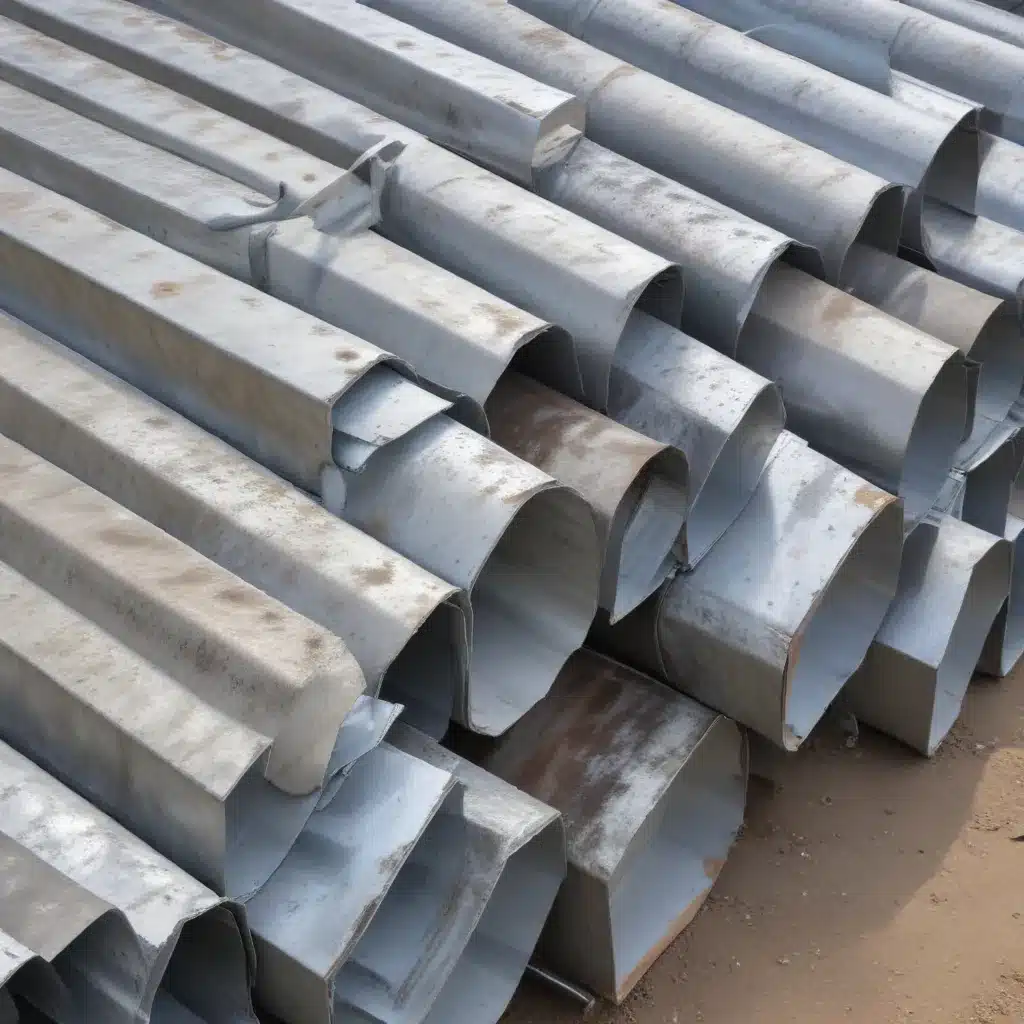
As an experienced welder and metal fabricator, I’ve had my fair share of encounters with the unique challenges posed by working with galvanized steel. While this material offers exceptional corrosion resistance, making it a popular choice for various industries, it can be a real test of skill and technique when it comes to welding.
The Double-Edged Sword of Galvanized Steel
Galvanized steel is essentially steel coated with a layer of zinc, which acts as a protective barrier against rust and other forms of corrosion. This zinc coating not only enhances the durability of the steel but also provides a distinct aesthetic appeal. However, this very feature can be a double-edged sword when it comes to welding.
The high heat conductivity of the zinc coating demands special considerations to ensure successful welds without compromising the integrity of the protective layer. As the zinc coating melts at a lower temperature than the underlying steel, it can quickly vaporize during the welding process, creating gaps and inconsistencies in the weld joint, ultimately weakening the structural integrity.
Preparing Galvanized Steel for Welding
Before even starting the welding process, proper preparation of the galvanized steel is crucial. I always begin by thoroughly cleaning the surface to remove any dirt, oil, or contaminants that may hinder proper adhesion during welding. A suitable solvent or degreaser is my go-to for ensuring a clean, residue-free surface.
Next, I lightly grind the area intended for welding to eliminate any remaining zinc oxide or other impurities. This step promotes better fusion between the base metal and the protective coating, enhancing the overall weld quality. It’s a delicate balance, as I need to be cautious not to remove too much of the zinc coating, which could compromise the long-term corrosion resistance of the steel.
Adapting Welding Techniques for Galvanized Steel
Once the surface is properly prepared, it’s time to choose the right welding method. As an experienced welder, I’ve found that certain techniques, such as metal inert gas (MIG) welding or flux-cored arc welding (FCAW), are particularly well-suited for working with galvanized steel. These methods provide sufficient heat while minimizing zinc vaporization, offering better control over the heat input and reducing the risk of damage to the protective coating.
Controlling heat and welding speed is crucial when dealing with galvanized steel. Maintaining optimal heat levels is essential for preventing excessive zinc vaporization while ensuring proper fusion with the base metal. I carefully adjust these variables based on the specific project requirements, ensuring that I achieve high-quality welds on the galvanized surfaces.
Overcoming Zinc-Related Challenges
One of the primary issues I’ve encountered when welding galvanized steel is the difficulty of penetrating the zinc barrier. The melting point of zinc is lower than that of steel, causing it to vaporize rapidly during the welding process. This phenomenon creates gaps and inconsistencies in the weld joint, compromising the overall structural integrity.
Moreover, the presence of zinc oxide on the surface further hinders proper fusion with the base metal, posing a significant obstacle for welders like myself. I have to be vigilant in monitoring the welding process, adjusting my techniques accordingly to overcome these challenges and ensure a strong, reliable weld.
Mitigating Side Effects of Welding Galvanized Steel
In addition to the challenges with penetration and fusion, welding galvanized steel can also lead to various side effects that affect both the welding process and the quality of the final product. I’ve had to deal with spatter formation on the surface, which can affect weld quality and require additional post-weld cleaning.
Porosity is another common issue I’ve encountered, as the trapped zinc vapors within the weld pool can lead to voids or cavities within the joint. This can compromise the structural integrity of the fabricated component, and I’ve had to develop specialized techniques to minimize the risk of porosity.
Furthermore, the fumes generated from heating the zinc coating can pose health risks for welders if proper ventilation measures are not in place. As a responsible metal fabricator, I always ensure that my welding area is well-ventilated and that I’m equipped with the necessary personal protective equipment to safeguard myself and my team.
Innovations in Welding Galvanized Steel
Despite the ongoing challenges, the welding industry has witnessed a surge in research and development aimed at enhancing techniques for working with galvanized steel. Engineers and metallurgists are exploring innovative approaches to address the issues of zinc vaporization and optimize the fusion with the base metal.
Cutting-edge technologies such as laser and electron beam welding are gaining traction as potential solutions for welding galvanized steel. These methods offer precise control over heat input and minimize the risk of zinc-related issues during the welding process. Advancements in shielding gases and flux formulations are also being tailored to better suit the unique requirements of galvanized steel welding, further improving weld quality and efficiency.
The Enduring Relevance of Galvanized Steel
Despite the challenges, galvanized steel remains a favored material for fabricating a wide range of products across various industries. Its exceptional corrosion resistance, coupled with its distinct aesthetic appeal, continues to make it an attractive option for manufacturers and builders alike.
As an experienced welder and metal fabricator, I’ve had the opportunity to work with galvanized steel on numerous structural projects, and I’ve witnessed firsthand the evolution of welding techniques and technologies to address the unique challenges it presents. By staying up-to-date with the latest advancements, adapting our methods, and exercising meticulous attention to detail, we can continue to harness the full potential of this remarkable material and deliver high-quality, long-lasting fabrications.
At The Weld Fab, we take pride in our ability to navigate the complexities of welding galvanized steel, ensuring that our clients’ structural projects not only meet the highest standards of quality and durability but also showcase the unique beauty of this versatile material. With our expertise and commitment to innovation, we are poised to continue playing a pivotal role in the evolution of the metal fabrication industry.


